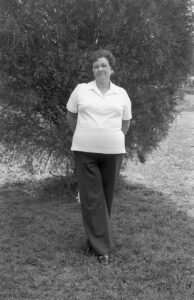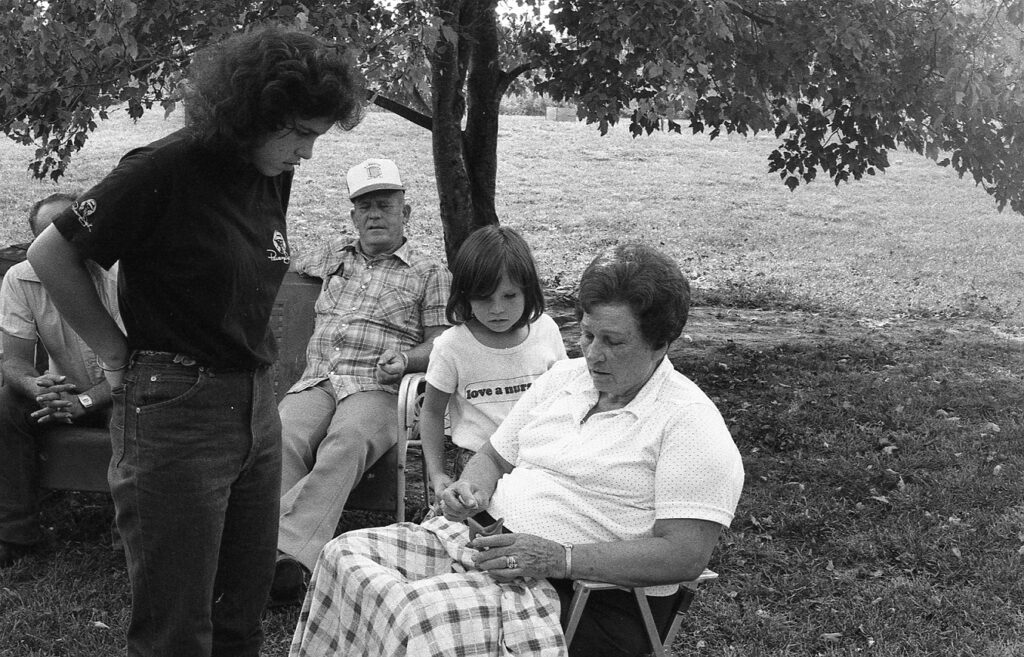Nola Campbell, an accomplished ceramic artist, grew up on the Catawba Reservation in South Carolina. She was the daughter of a Catawban chief and a white woman. After her father’s early death, Nola was surrounded by strong-minded and hardworking women. In the midst of the stories about suffering and loss, Nola shares tales of sibling rivalry and pranks, interweaving hilarity amongst the hardship. Nola was courageous and outspoken, and was always the first to speak up: “I might get whipped, but somebody will know I was there.”
Audio Player
“I was born down here on the Catawba Indian Reservation in York County [South Carolina] on May 2nd, 1918. I was raised around here and I’ve been living here almost all this time. My uncle come after us to take us over there to Fort Mill [South Carolina] to work for a while. So I guess if he hadn’t done that, we’d a’just lived right down there on the reservation all [my life]. There wasn’t no place for the [Catawba] Indians to go but there.

There were seven of us children. I had two brothers. I have one sister dead, Ruthie, and three living. My oldest sister, Verdy, is seventy-six. My twin sisters, Reola and Viola, must be sixty-three. They’re about three years younger than I am.
My daddy died before I turned ten years old. When my daddy was sick, we [were living] in a two-room house down next to the river. About every hour, I’d run to the spring and get fresh water for him. I carried a half-gallon fruit jar to the spring and got him a drink of water and carried it back to him every hour, and I would just run for dear life. He died in April and I was ten on the second day of May.
I can remember back when we moved down out of the reservation to that farm. We had to go to work on the Sutton farm and pick and hoe cotton, or anything they had for us to do. The Indians always farmed, and they raised their children up to help. That’s how I learned to pick cotton. I picked cotton before I was ever eight years old.
So Ruthie and I both worked on that farm. We didn’t finish elementary school like the other children did. In the fall while school was going on, the owner of the farm said he wanted four or five bales of cotton done a day. I like to work, but I didn’t think it was right for him to do us like that. It was because we was Indians. That’s how come we had to work like that.

Georgia Harris is the best pottery maker of all of us. Lot of ‘em say that I am, and I say, “No, not me. I learnt from her, so she’s gotta be first.” I give her credit for that. Georgia Harris and Doris Belew are the two other older Indians who still make these pots. They have samples of our work at the museum in Columbia [South Carolina]. I sent one up there [to the Smithsonian] and it got broke. It was valued at seventy-five dollars, and the insurance didn’t want to pay it. They just don’t know the value of anything and how much trouble it takes to get these pots fixed up and what you’re going through to do it. They think, “Well, now, it’s not worth that much.”
Georgia’s married to my brother, and her son Floyd asked me one time, he said, “Make me some little pots. Mama is makin’ pots. You make me some.”
I said, “I can’t.”
And Georgia said, “Yes, you can. If you want to learn, you can learn.”
I was about twelve or thirteen. I never did think I’d be interested in making pottery but I started off [and she encouraged me] but she wouldn’t help me. She’d tell me, “Now you watch me and do what I do, and the way I do it, you do it.” So that’s the way I learned. Nobody took my pot down and shaped it for me. I had to shape it up and work with it myself, y’know. Sometimes Georgia made the pots and I got to rub ‘em. While she would be building and scraping, I would be rubbing.
What I made then was just little tiny things. Now I can make anything I want. I make loving cups, pitchers, vases, ducks—just anything I put my mind to, I can make it.”